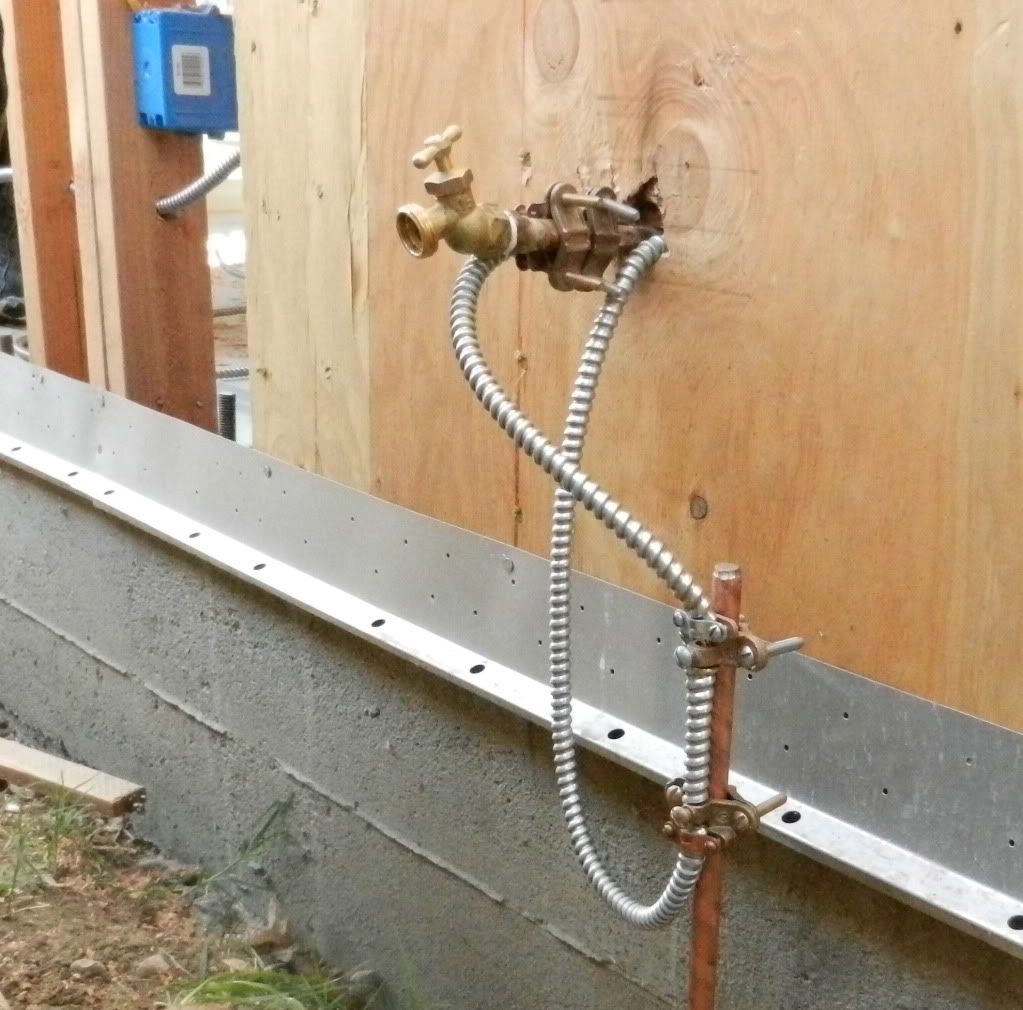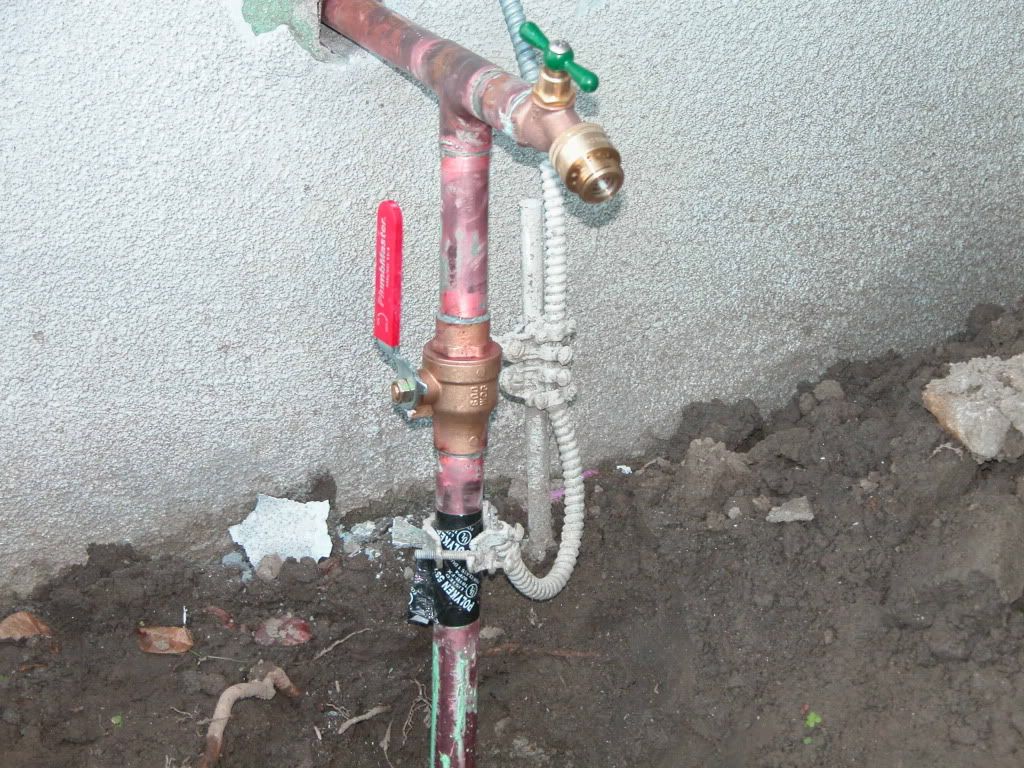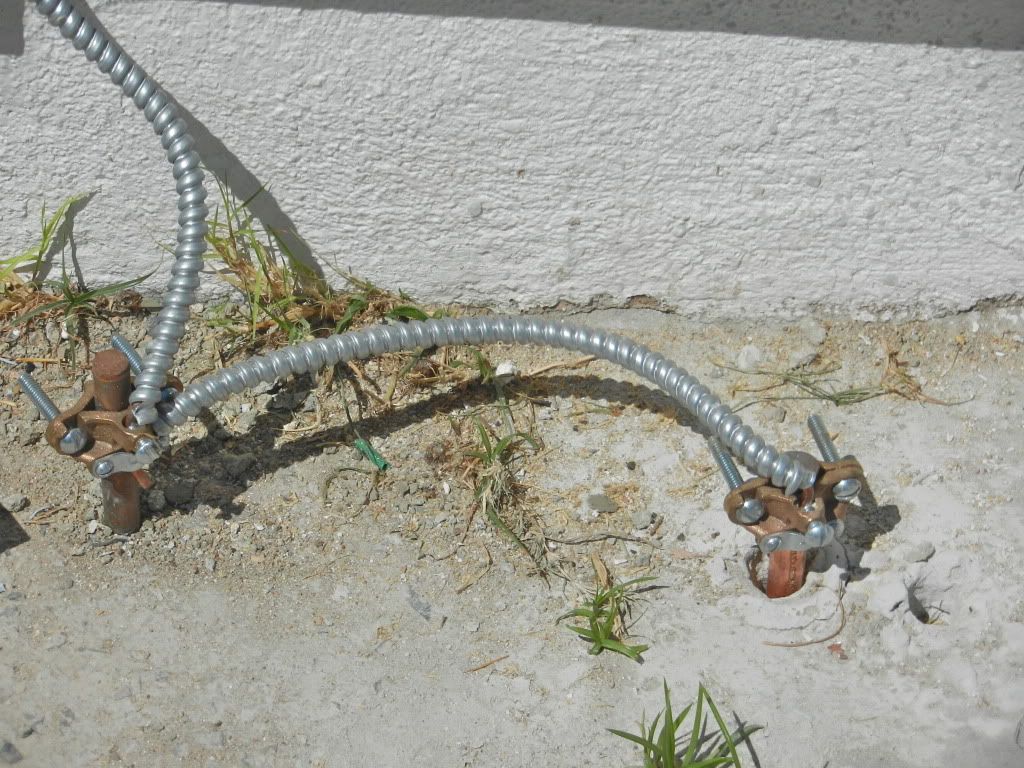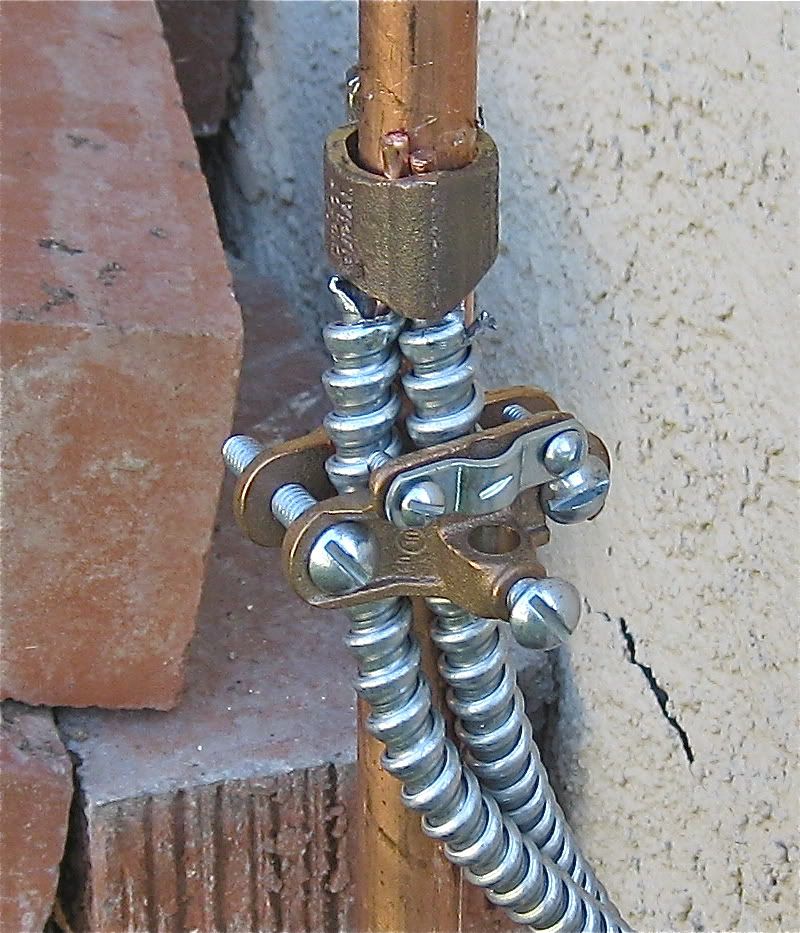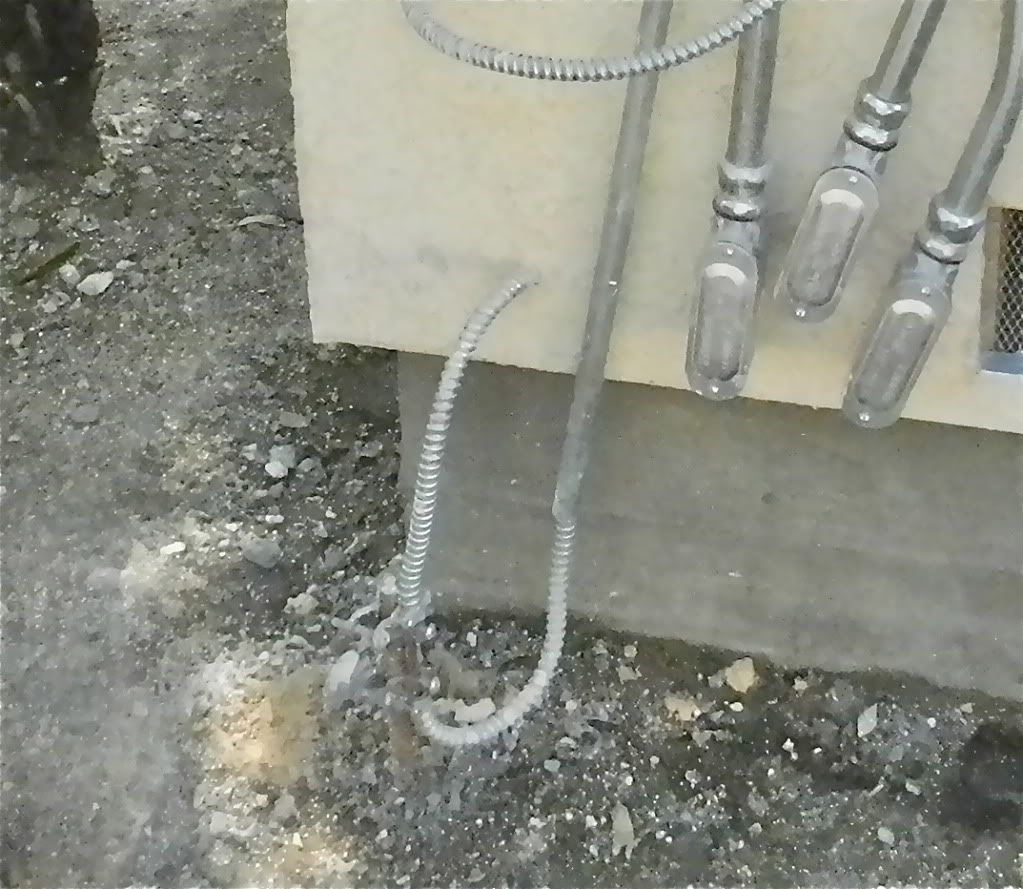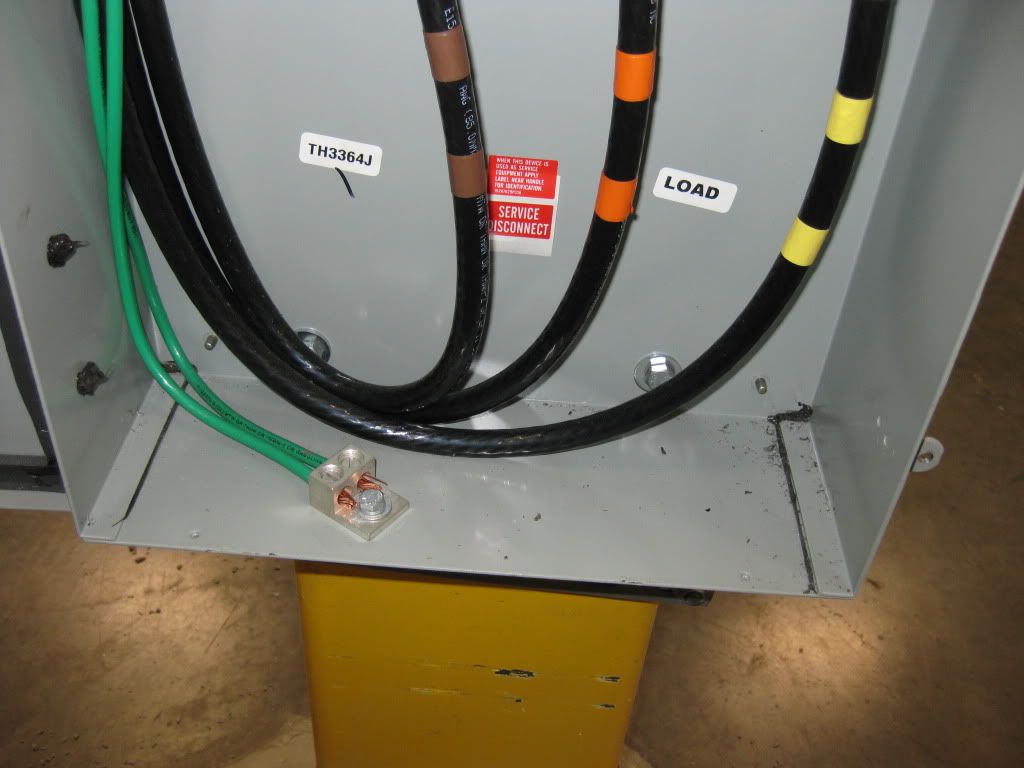There is a bonding fitting where the GEC and it's armor enters the enclosure. Then the armor continues. Should the armor stop at the bonding point? The armor is required to be bonded at every end so how about a foot from the end? Is that the same thing? I have read that the resistance of a gec with armor that is not bonded at the ends has been measured at 100 times greater than a gec with properly bonded armor.
I have posted this picture before in a thread related to the grounds but I couldn't find the thread.
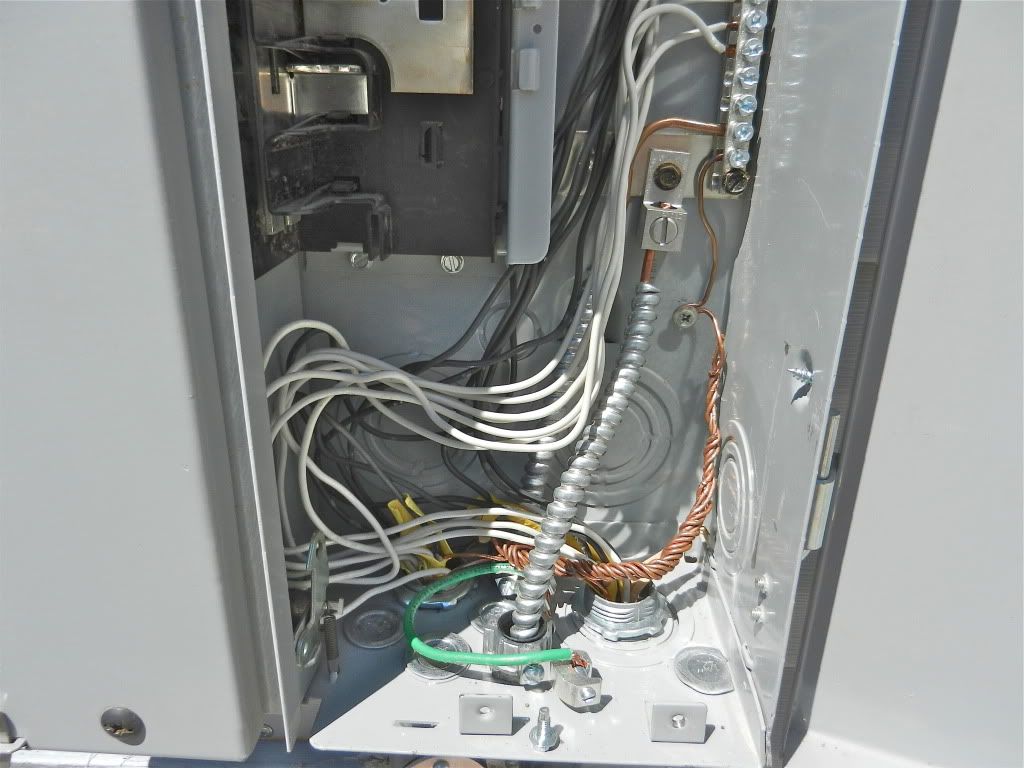
I have posted this picture before in a thread related to the grounds but I couldn't find the thread.

Last edited by a moderator:

